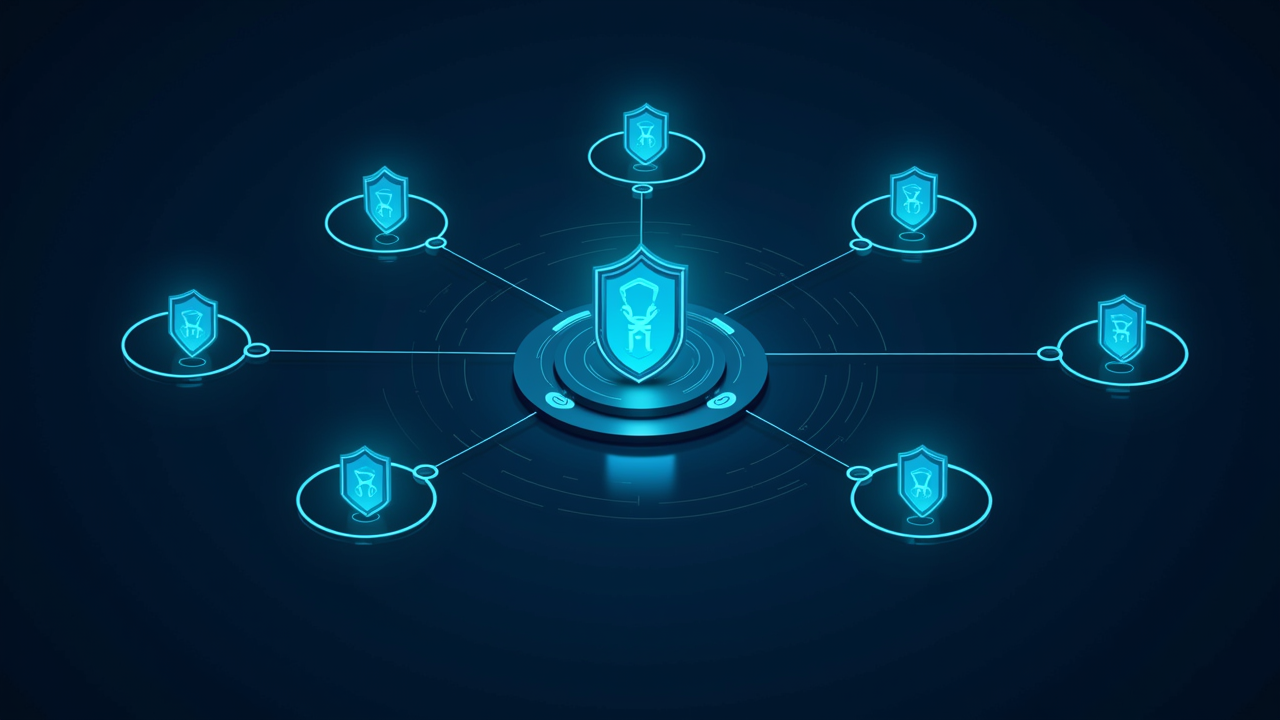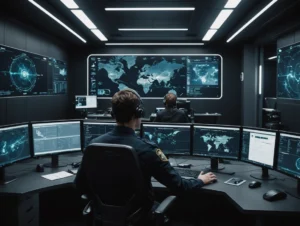In the relentless pace of modern software development, the principles of DevSecOps aim to integrate security seamlessly into every phase of the CI/CD lifecycle. However, this “shift-left” philosophy, combined with the complexity of cloud-native architectures, has created an unprecedented deluge of data. Logs, metrics, alerts, and vulnerability scan results pour in from dozens of disparate tools, overwhelming security teams and creating a state of perpetual reactivity. The challenge is no longer just about collecting data, but about intelligently interpreting it in real-time to preempt threats before they escalate. Traditional monitoring tools, often reliant on static rules and signatures, struggle to keep up with the dynamic, ephemeral nature of today’s infrastructure. This is where a new paradigm of AI-driven automation becomes not just a luxury, but a necessity. Multi-agent AI systems, exemplified by frameworks like CrewAI, offer a transformative approach. By creating a collaborative team of specialized AI agents, organizations can move from a state of passive monitoring to one of proactive, autonomous anomaly detection and response. This article explores how CrewAI can be architected and deployed to build an intelligent, 24/7 security analysis team that enhances, rather than replaces, human expertise in the DevSecOps pipeline.
The Challenge of Modern DevSecOps Monitoring
The primary obstacle in modern DevSecOps monitoring is the sheer volume and velocity of data, a phenomenon often termed “data deluge.” Every component in the software delivery pipeline—from code commits and container builds to infrastructure provisioning and application runtime—generates a constant stream of logs and metrics. Observability platforms, SIEMs (Security Information and Event Management), and APM (Application Performance Monitoring) tools ingest terabytes of this data. For a human analyst, sifting through this noise to find a genuine signal of a security threat is like finding a needle in a rapidly growing haystack. This inevitably leads to “alert fatigue,” where constant, low-context notifications are ignored, creating a critical blind spot for real incidents.
Compounding this issue is the complexity of cloud-native and microservices architectures. Unlike monolithic applications with predictable communication patterns, modern systems consist of hundreds of ephemeral services, containers, and serverless functions. This dynamic environment means that a stable “baseline” of normal behavior is constantly shifting. A spike in API calls might be a legitimate scaling event, a new feature rollout, or the beginning of a denial-of-service attack. Rule-based monitoring systems struggle to differentiate between these scenarios, leading to a high rate of false positives and an inability to detect subtle, low-and-slow attacks that deviate from a baseline in non-obvious ways.
Furthermore, the DevSecOps toolchain is often fragmented and siloed. A vulnerability scanner might identify a critical CVE in a container image, the CI/CD system logs a new deployment, and a cloud monitoring tool detects unusual network traffic from a pod running that same image. In many organizations, these are three separate data points in three different systems. Without a mechanism to automatically correlate these events, the crucial context is lost. An analyst would need to manually piece together this information, a time-consuming process that delays detection and response, giving adversaries a critical window of opportunity to act.
The pressure to maintain high development velocity creates a natural tension between speed and security. Thorough manual security reviews for every single deployment are impractical in an environment with dozens or hundreds of releases per day. This reality forces a reliance on automated security gates within the CI/CD pipeline, such as Static Application Security Testing (SAST) and Software Composition Analysis (SCA). While essential, these tools often produce a high volume of findings, many of which may not be exploitable in a given context. Teams are then faced with the daunting task of triaging and prioritizing these findings, a process that can slow down development or, worse, lead to a culture where security alerts are routinely bypassed.
Traditional security monitoring is also fundamentally reactive. It is designed to detect known threats based on predefined signatures or to alert on threshold breaches after they have occurred. This approach is ill-equipped to handle novel, zero-day attacks or sophisticated multi-stage intrusions where an adversary carefully blends in with normal activity. A proactive stance requires a system that can understand context, correlate weak signals from multiple sources, and identify anomalous patterns of behavior that indicate not just a past event, but a potential future threat.
Ultimately, the core challenge is one of cognition and scale. Human security teams, despite their expertise, cannot scale to meet the demands of monitoring complex, high-velocity systems 24/7. The need is for an automated system that doesn’t just process data, but reasons about it. It must be able to connect disparate events, enrich raw alerts with operational and business context, and present a coherent narrative of a potential threat, enabling human experts to focus their time on strategic decision-making and response rather than low-level, repetitive analysis.
Harnessing CrewAI for Security Automation
CrewAI emerges as a powerful framework to address these challenges by enabling the creation of autonomous, collaborative AI agent teams. Unlike single-purpose scripts or monolithic AI models, CrewAI is built on the concept of a multi-agent system where each agent has a specific role, a set of tools, and a distinct goal. These agents work together as a “crew” to accomplish a complex task, such as investigating a security anomaly. This mirrors the structure of a human security operations center (SOC), where log analysts, threat intelligence experts, and incident responders collaborate, each bringing their specialized skills to the table.
The fundamental departure from traditional automation lies in the agents’ ability to reason and adapt. A conventional script follows a rigid, predefined path: if condition A is met, execute action B. A CrewAI agent, powered by a large language model (LLM), can understand a high-level goal, break it down into smaller steps, select the appropriate tool for each step, and even handle unexpected outputs or errors. For example, if a tool for querying a log database fails, the agent can reason that it should try an alternative query or report the tool failure, rather than simply halting the entire process. This flexibility is crucial for navigating the unpredictable nature of security investigations.
Specialization is a core strength of the CrewAI architecture. Instead of a single, generalist AI, you can design a crew of specialists. For instance, a LogAnalysisAgent could be an expert at parsing and identifying patterns in system logs. A VulnerabilityIntelligenceAgent could be tasked with cross-referencing software artifacts against CVE databases. A CloudConfigurationAgent could specialize in querying cloud provider APIs to check for misconfigurations or unusual permission changes. This division of labor ensures that each part of an investigation is handled by an agent with the most relevant context and capabilities, leading to more accurate and efficient analysis.
Implementing such a system involves defining agents, the tools they can use, and the tasks they must perform. A tool in CrewAI is simply a function that an agent can decide to call. This could be anything from a simple API client to a complex data analysis function. For example, a security tool could be created to query a SIEM like Splunk or Elastic.
from crewai_tools import BaseTool
class SIEMQueryTool(BaseTool):
name: str = "SIEM Query Tool"
description: str = "Queries the SIEM for logs matching a specific search query over a given time range."
def _run(self, query: str, time_range: str = "24h") -> str:
# In a real implementation, this would connect to a SIEM API
print(f"Executing SIEM query: '{query}' for the last {time_range}")
# ... API call logic ...
return "Found 1,250 log entries matching 'Failed Login' from IP 1.2.3.4"The true power is unlocked when these agents collaborate within a crew. The process is orchestrated, often sequentially or hierarchically, where the output of one agent’s task becomes the input for the next. A LogAnalysisAgent might detect an anomaly and pass its findings—such as a suspicious IP address and timestamp—to a ThreatIntelAgent. This second agent then uses its tools to check if the IP is on any known blocklists or associated with a botnet. This collaborative context-passing mechanism allows the crew to build a rich, multi-faceted understanding of an event that would be impossible for a single agent or a simple script to achieve on its own.
For DevSecOps, this translates into a significant force multiplier. It automates the tedious, time-consuming initial stages of investigation, allowing human analysts to engage with a pre-triaged, context-rich report. This reduces mean time to detection (MTTD) and mean time to response (MTTR). Furthermore, by operating 24/7, the AI crew ensures that potential threats are investigated the moment they are detected, regardless of the time of day, providing a level of vigilance that is difficult to achieve with human teams alone.
Architecting a Crew for Anomaly Detection
Designing an effective CrewAI team for anomaly detection begins with a clearly defined overarching goal. A suitable goal might be: “Autonomously monitor application and infrastructure logs, identify statistically significant anomalies, enrich them with contextual security data, and generate a concise, actionable report for the on-call security engineer.” This high-level objective guides the creation of specialized agents, each responsible for a distinct part of the workflow. The architecture of the crew is paramount, ensuring a smooth flow of information and a logical progression from raw data to actionable intelligence.
The first agent in this architecture is the Log Baselining Specialist. Its primary role is to connect to various data sources—such as cloud provider logs (CloudWatch, Azure Monitor), Kubernetes cluster logs (Loki, Fluentd), or application logs—and establish a baseline of “normal” behavior. Its goal is to continuously analyze key metrics like API call frequency, network traffic volume, and error rates, using statistical methods to model expected patterns. This agent would be equipped with tools to query time-series databases and log aggregation platforms. Its output would be a constantly updated model of normalcy and a stream of potential deviations that breach statistical thresholds.
Next in the chain is the Anomaly Verification Analyst. This agent receives the potential deviations flagged by the Baselining Specialist. Its goal is to filter out the noise and confirm whether an anomaly is genuinely suspicious or simply a benign outlier, such as a planned maintenance event or a traffic spike from a marketing campaign. To do this, it might use tools that correlate the anomaly’s timestamp with a calendar of scheduled deployments or known events. It might also perform more advanced statistical tests to validate the significance of the deviation, effectively acting as the first layer of triage to reduce false positives.
Once an anomaly is verified, the task is passed to the Contextual Enrichment Expert. This is arguably the most critical agent in the crew. Its goal is to answer the question, “Why is this happening?” It is equipped with a diverse set of tools to gather context from across the DevSecOps ecosystem. These tools might include an API client for the CI/CD system (to check for recent deployments), a vulnerability scanner interface (to check the running container image for known CVEs), a cloud API client (to inspect IAM roles and security group configurations), and a threat intelligence feed integration (to check IP addresses or domain names against known malicious indicators).
The final member of the crew is the Incident Reporting Officer. This agent’s goal is to synthesize all the information gathered by the preceding agents into a coherent and human-readable format. It takes the initial anomaly data, the verification status, and the rich context and crafts a summary. This agent doesn’t perform new analysis but excels at communication. Its tools would be integrations with notification platforms like Slack, PagerDuty, or Jira. It would generate a report detailing the anomaly, the correlated events (e.g., “This traffic spike coincided with the deployment of service-X which contains a critical RCE vulnerability”), and a recommended priority level, ensuring the human responders have everything they need to act swiftly.
This entire architecture can be defined in code using the CrewAI framework. The setup involves instantiating each agent with its specific role, goal, backstory, and assigned tools, then defining the sequence of tasks. This programmatic approach makes the security workflow version-controlled, repeatable, and easily adaptable as new tools or data sources are introduced into the environment.
from crewai import Agent, Task, Crew, Process
from my_security_tools import LogQueryTool, CveScanTool, PipelineApiTool, SlackAlertTool
# Initialize tools
log_tool = LogQueryTool()
cve_tool = CveScanTool()
pipeline_tool = PipelineApiTool()
slack_tool = SlackAlertTool()
# Agent 1: Anomaly Detector
detector = Agent(
role='Log Anomaly Detector',
goal='Monitor logs for statistically significant deviations from the baseline.',
backstory='An expert in statistical analysis and time-series data.',
tools=[log_tool],
verbose=True
)
# Agent 2: Context Enricher
enricher = Agent(
role='Security Context Enrichment Specialist',
goal='Gather context about an anomaly from CI/CD, vulnerability, and cloud systems.',
backstory='A master of APIs and correlating disparate security data points.',
tools=[cve_tool, pipeline_tool],
verbose=True
)
# Agent 3: Reporter
reporter = Agent(
role='Incident Reporting Officer',
goal='Create a clear, concise, and actionable alert from analyzed data.',
backstory='An expert communicator skilled at summarizing technical details for first responders.',
tools=[slack_tool],
verbose=True
)
# Define Tasks
task1 = Task(description='Analyze production K8s logs for network traffic anomalies in the last 15 minutes.', agent=detector)
task2 = Task(description='Using the output from the log analysis, investigate the associated container images and deployment history for security risks.', agent=enricher)
task3 = Task(description='Summarize all findings and send a high-priority alert to the #security-alerts Slack channel.', agent=reporter)
# Instantiate Crew
security_crew = Crew(
agents=[detector, enricher, reporter],
tasks=[task1, task2, task3],
process=Process.sequential
)
# Execute the Crew's mission
result = security_crew.kickoff()A Proactive Threat Detection Workflow Example
Let’s illustrate the power of a CrewAI security team with a practical workflow. Imagine the trigger event: the Log Baselining Specialist detects a sudden and sustained 500% increase in egress data transfer from a single pod running a customer-facing API service in a production Kubernetes cluster. This activity deviates significantly from the established baseline for this service, which typically has minimal outbound traffic. The agent flags this as a high-priority anomaly and initiates the crew’s workflow.
Step 1: Anomaly Verification. The initial finding is passed to the Anomaly Verification Analyst. Its task is to rule out obvious operational causes. It uses a tool to query the deployment calendar and the CI/CD pipeline API. The tool reports that no new deployments or planned maintenance activities for this service occurred in the last 12 hours. It also checks internal monitoring dashboards and finds no corresponding spike in legitimate user activity. Having ruled out common benign causes, it confirms the anomaly as “verified suspicious” and passes its findings, including the pod name (customer-api-7b5d...), container image (my-org/customer-api:v2.1.4), and a timeline of the traffic spike, to the next agent.
Step 2: Contextual Enrichment. The Contextual Enrichment Expert receives the verified anomaly data and begins its investigation. Its goal is to build a complete picture of the situation. It executes a series of actions using its specialized tools:
- Vulnerability Scan: It uses its
CveScanToolto scan the container imagemy-org/customer-api:v2.1.4. The tool returns a critical finding: the image’s base OS includes a recently disclosed remote code execution (RCE) vulnerability in a popular image processing library (e.g., Log4Shell or a similar high-impact CVE). - Cloud Configuration Check: It uses a cloud API tool to inspect the IAM role associated with the pod’s service account. It discovers the role has overly permissive
s3:GetObjectpermissions on a bucket containing sensitive customer data. - Threat Intelligence Query: It extracts the destination IP addresses from the anomalous traffic and queries a threat intelligence feed. One of the IPs is flagged as a known command-and-control (C2) server for a specific ransomware group.
Step 3: Synthesis and Hypothesis Generation. The agent now possesses three critical pieces of context: a vulnerable application, excessive permissions, and communication with a known malicious endpoint. Powered by its underlying LLM, it synthesizes this information to form a high-confidence hypothesis: “The RCE vulnerability in the image processing library was likely exploited, allowing an attacker to gain control of the pod. The attacker is now using the pod’s overly permissive IAM role to exfiltrate sensitive data from the S3 bucket to their C2 server.” This is a profound leap from a simple “high network traffic” alert.
Step 4: Reporting and Escalation. The complete analysis, including the hypothesis, is handed to the Incident Reporting Officer. This agent’s task is to communicate the findings effectively. It uses its JiraTicketTool and SlackAlertTool to perform its function. It creates a critical-priority Jira ticket with a title like “Potential Data Exfiltration via Exploited RCE in customer-api-pod.” The ticket description contains a full summary: the initial anomaly, the CVE details, the IAM misconfiguration, the threat intelligence match, and the crew’s hypothesis. Simultaneously, it posts a condensed, high-impact message to the #security-alerts Slack channel, tagging the on-call security engineer.
This entire workflow, from initial detection to the delivery of a context-rich, actionable alert, can be executed in a matter of minutes, 24/7. It transforms a low-signal alert (“network spike”) into high-signal intelligence (“active data exfiltration from an exploited pod”). This proactive, automated investigation gives the human response team a massive head start, enabling them to move immediately to containment and remediation—such as isolating the pod, rotating credentials, and patching the vulnerability—instead of spending precious time on initial analysis.
graph TD
A[Trigger: Network Anomaly Detected] --> B{Log Baselining Specialist};
B --> C{Anomaly Verification Analyst};
C -- "Is it a planned event?" --> D[Check Deployment Calendar];
C -- "Anomaly Verified" --> E{Contextual Enrichment Expert};
E --> F[Scan Image for CVEs];
E --> G[Check Pod's IAM Role];
E --> H[Query Threat Intel Feeds];
subgraph "Enrichment Findings"
F --> I[Critical RCE Found];
G --> J[Excessive S3 Permissions];
H --> K[Destination IP is known C2];
end
{I, J, K} --> L[Synthesize Findings & Form Hypothesis];
L --> M{Incident Reporting Officer};
M --> N[Create Critical Jira Ticket];
M --> O[Send Slack Alert to On-call];
O --> P[Human Analyst Begins Response];Integrating AI Insights into CI/CD Pipelines
The true promise of DevSecOps is the creation of tight feedback loops, where insights from production are used to improve security earlier in the development lifecycle. A CrewAI anomaly detection system should not exist in isolation; its intelligence must be integrated directly into the CI/CD pipeline to create a proactive, self-improving security posture. This “shift-left” of intelligence transforms the pipeline from a simple series of checks into a dynamic, risk-aware delivery mechanism.
One of the most powerful integrations is the creation of an “AI Security Gate” as a stage in the pipeline. Before a new version of a service is deployed to production, the pipeline can trigger the security crew to perform a pre-deployment risk assessment. The crew’s Contextual Enrichment Expert can be tasked with analyzing the proposed changes. For example, it could scan the new container image for vulnerabilities, analyze changes in the Infrastructure as Code (IaC) for new risky permissions, and even check the new application code’s dependencies against a list of libraries previously associated with security incidents.
This AI-powered gate is more intelligent than a simple pass/fail check based on CVE severity. The crew can use its reasoning capabilities to assess contextual risk. For instance, a medium-severity vulnerability might be flagged as high-risk if the crew determines that the affected code path is exposed to the public internet and the service has access to sensitive data. The crew’s final output could be a risk score or a detailed report, which the CI/CD pipeline can use to make a decision: automatically proceed, halt the deployment for manual review, or even automatically roll back.
Here is a conceptual example of what a GitHub Actions workflow step might look like to invoke such a check. The run-crewai-check.py script would contain the logic to initialize and kick off the security crew with a specific goal related to the pre-deployment analysis.
- name: AI Pre-Deployment Security Gate
id: crewai_gate
run: |
# This script triggers the CrewAI analysis on the new container image and IaC changes
python ./scripts/run-crewai-check.py
--image-tag ${{ github.sha }}
--iac-path ./terraform/
# The script would output the risk assessment result to a file
RISK_LEVEL=$(cat crew_risk_report.txt)
echo "::set-output name=risk_level::$RISK_LEVEL"
- name: Evaluate Security Gate Result
if: steps.crewai_gate.outputs.risk_level == 'CRITICAL'
run: |
echo "CrewAI Security Gate failed with CRITICAL risk. Halting deployment."
# This step could also post a comment to the pull request
exit 1Beyond pre-deployment gates, the insights generated from production monitoring can be used for dynamic policy generation. If the CrewAI system consistently observes that developers are provisioning S3 buckets without encryption or creating overly permissive IAM roles, it can do more than just report it. It can synthesize these recurring patterns and automatically suggest a new policy for a tool like Open Policy Agent (OPA) or a cloud-native security service. This suggestion could be submitted as a pull request to a policy-as-code repository, allowing the security team to review and approve a preventative control based on data-driven evidence from production.
The human-in-the-loop remains a critical component of this integrated system. The goal of the AI crew is not to replace human security engineers but to augment them by handling the high-volume, data-intensive analysis. The AI’s output—a well-reasoned risk assessment or a proposed policy change—is presented to a human for the final decision. This allows security experts to operate at a more strategic level, focusing their expertise on complex edge cases, architectural reviews, and threat modeling, rather than being bogged down in the minutiae of log analysis.
Ultimately, this integration fosters a truly learning system. The CI/CD pipeline becomes a point of both enforcement and data collection. The CrewAI system analyzes production data to find anomalies and weaknesses. These findings are then fed back into the pipeline as enhanced security gates and automated policy suggestions. This continuous loop—build, deploy, monitor, learn, and improve—is the pinnacle of a proactive DevSecOps culture, driven by the collaborative intelligence of human experts and their autonomous AI counterparts.
The evolution of DevSecOps from a set of principles to a practical, automated reality requires a fundamental rethinking of security monitoring. The overwhelming scale and complexity of modern cloud-native environments have rendered traditional, reactive approaches insufficient. The introduction of multi-agent AI systems, powered by frameworks like CrewAI, represents a paradigm shift. It moves us away from a world of noisy, low-context alerts and toward one of proactive, intelligent, and autonomous investigation. By architecting a collaborative crew of specialized AI agents, organizations can automate the painstaking work of anomaly detection, contextual enrichment, and initial triage, operating at a speed and scale that is simply unattainable for human teams alone. This approach not only drastically reduces alert fatigue and accelerates incident response but also uncovers subtle threats that might otherwise go unnoticed. The true power of this model is realized when these AI-driven insights are fed back into the CI/CD pipeline, creating a resilient, self-improving security ecosystem. The future of DevSecOps security is not a choice between human intuition and machine automation, but a powerful synergy between them, where autonomous AI crews act as a tireless vanguard, empowering human experts to secure complex systems with greater confidence and efficiency.




